MBR-2. Prolonged service
In 1929, the famous aircraft designer RL Bartini presented to TsAGI a draft design of a naval neighbor intelligence officer (ICBM). The following year, under the supervision of I.V. Chetverikov at the plant number 39 organized marine department CDB. G.M. was appointed deputy head. Beriev. Bartini was also sent to the same department. However, he was soon forced to leave, and all materials of the project on an all-metal ICBM aircraft were transferred to G.M. Beriev.
The country's need for such seaplanes was great, but the whole aviation aluminum went to the construction of heavy bombers. Therefore, G.M. Beriev decided to rework the original design of an all-metal ICBM aircraft, making it wooden. As a result, a practical new seaplane was created. The design of the machine with the M-27 engine received the designation MBR-2 (TsKB-25). However, this motor could not stand the bench tests and had to be replaced with a less powerful, but serial M-17.
The first flight of an experienced MBR-2 with a BMW VI engine, built at the Menzhinsky plant, was performed by the pilot B.L. Buchholz in May 1932.
The MBR-2 was a diversified flying boat with a high wing. The success of a seaplane largely depends on the choice of the hull contours of the boat, the cross section of which in the first direction was distinguished by high deadrise, which allowed the machine to be operated at a wave up to 0,7 m. According to VB Shavrova, this form of the bottom was extremely successful for landing, but not optimal on the run-up. It would be more profitable to round the bottom section in the keel area, but technologically this shape was easier to carry out from metal than from wood.
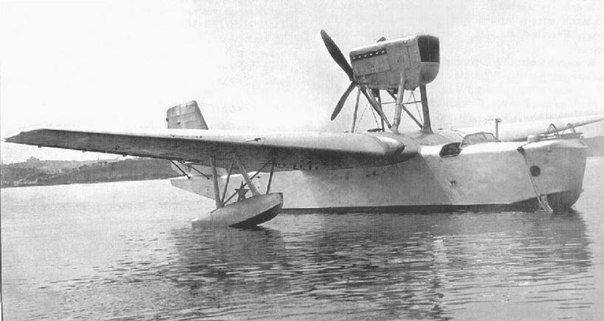
Despite the fact that the seaplane was not amphibious, and a removable chassis was used for its rolling out, the designers made it possible to use it in the winter on skis, and later on wheels. The main structural material of the seaplane was wood, with the exception of the chassis, tails and ailerons, made of aluminum alloy and covered with percals, as well as elements of weapons and power plant.
Armament - two turret guns of the “YES” machine guns of the navigator and mechanic, as well as 550 kg caliber bombs up to 250kg, which were located on the wing holders. The crew consisted of three people: the pilot (there was a place for the co-pilot), the navigator in the front, and the gunner (mechanic) in the stern cabin.
From January 1933 to February 1934, the modified machine passed state tests. Engineers Balykov, pilots Glyadeiko and Krasnikov were driving the car. Tests showed that the seaplane on piloting technique did not differ from the previous modification. At the same time, the MBR-2 had an excessive margin of road stability and the pilot had to put a lot of effort on the pedals due to the insufficient axial compensation of the rudder. However, a flying boat could roll up to 45 °.
In March of the same year, the MBR-2 passed state tests on skis. The flying boat could be used as a bomber, but this eliminated the suspension of 250 kg caliber bombs because of the close proximity of the ski landing gear to them. The maximum ground speed decreased from 209 to 203 km / h, and the overload flight weight increased to 4350 kg. It should be noted that the ski take-off and landing device was widely used during the Great Patriotic War.
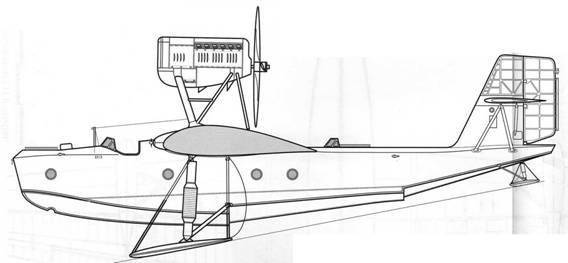
The scope of application and capabilities of the machine expanded rapidly. For example, in August 1934, employees of the Special Technical Bureau, who headed Bekauri, experienced radio-controlled ICBM-2 in Taganrog. Then came the cargo and passenger versions of the car.
In 1935, the seaplane, designated MBR-2bis (aircraft "L"), installed a more powerful high-altitude engine M-34НБ with a supercharger and a two-bladed metal propeller of ground pitch and diameter 3,2 m. the latter has significantly improved the review. Sparky machine guns "YES" was replaced by a single SHKAS of the same caliber, but more rapid-fire. To increase the stock of road stability, they increased the area of the vertical tail, changing its shape. All this allowed to bring the maximum speed of the water to 235 km / h, and at the height of 5000 m - to 275 km / h.
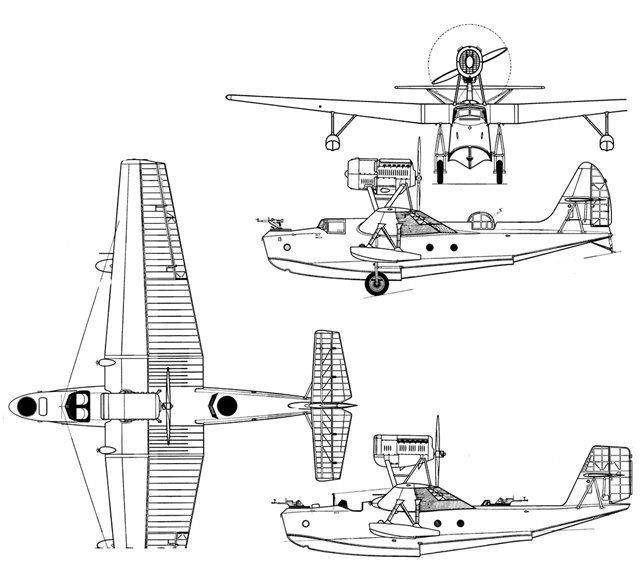
Despite the excellent operational and seaworthy qualities, the MBR-2 was already outdated by the 1938 year. As its replacement in the design bureau of marine aircraft, a new hydroplane MBR-7 was developed. The new aircraft had the same scheme and was equipped with an M-103A engine.
By decree on the development of a new intelligence officer, the maximum speed at 4500 m not less than 370 km / h was envisaged, the landing speed was 115 km / h, the practical ceiling was 8200 m, and the range with a normal flight weight was 1000 km (ferry 2000 km). Defensive armament was supposed to be two ShKAS machine guns. Bomb load up to 400 kg.
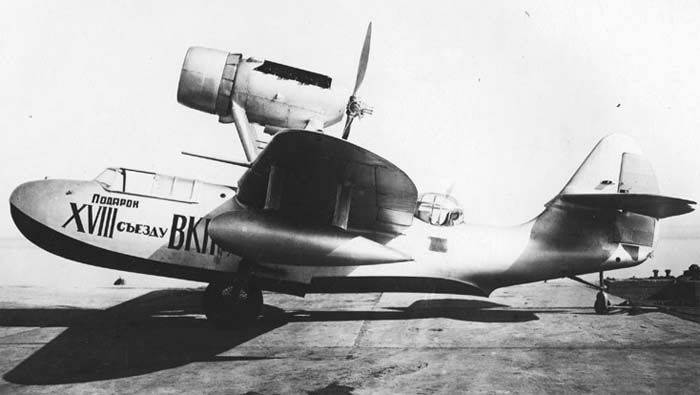
The first flight on the MBR-7 made N.P. Kotyakov in April 1939. In June, the pilot M.V. Tsepilova. During the week he performed ten flights, while noting an easy take-off, a good vertical speed (the height of the 8000 m new machine reached for 25 minutes), excellent visibility for the pilot and a fairly high maximum speed - up to 365 km / h.
Were found and negative points. Among them, the tendency of the machine to turn right during take-off, travel instability and low flap strength. The latter caused an increased landing speed and the inclination of the aircraft to “leopards” (the ricochet of a seaplane from the surface of the water during landing).
In October 1939, an experienced MBR-7 crashed. During the takeoff run, progressive longitudinal oscillations of the machine appeared at the exit to the redan, throwing the plane into the air almost 3 meters with a sudden pickling and then diving. The plane was destroyed and could not be repaired.
Guilty recognized the pilot, who, when the first "nod" appeared, did not stop the takeoff. By the way, when developing the MBR-7, they did not test the model of a seaplane in the hydro-channel of TsAGI, relying on their design experience with intuition. In addition, the MBR-7 was too strict on the elevator and the revolutions of the engine.
There were no replacements for the MBR-2, and he had to endure the burden of three wars on his shoulders. Fighting baptism of flying boats received during the Finnish War, but the machines experienced the greatest difficulties during the Great Patriotic War. From its first days, the MBR-2 was involved in combat operations and used around the clock, and mostly in the ground theaters of military operations in providing ground troops.
The large losses of the aircraft soon forced to go to the night bombing attacks. Lifting up to 600 kg of bombs (six FAB-100) MBR-2bis bombed the enemy's manpower, columns on the march, railway tracks and other military targets.
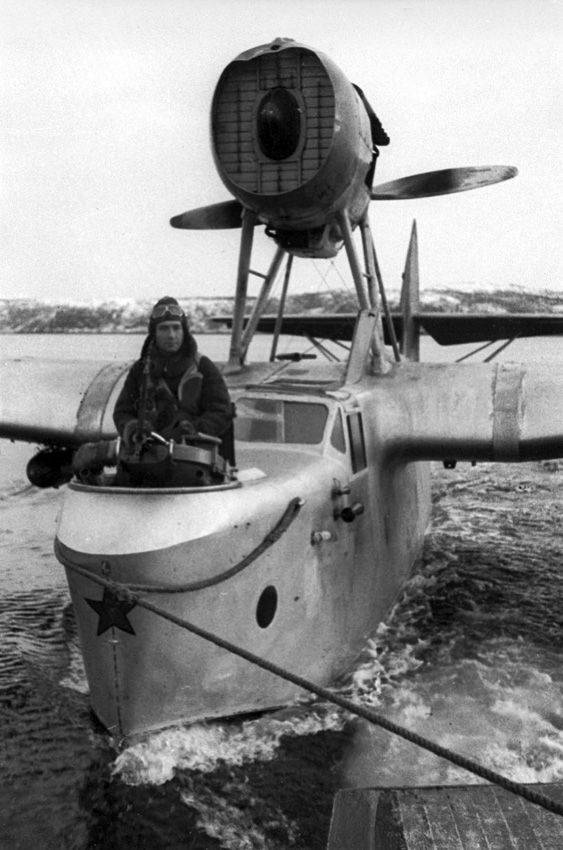
A unique case occurred on August 15, 1941 over the Baltic. A pair of ICBM-2 (pilots Petrovichev and Kudryashev) from the 41st separate squadron of the Baltic Air Force fleet patrolled over vehicles that evacuated people and cargo from Tallinn when the Ju-88 bomber appeared. Trying to disrupt the enemy’s plans, the couple’s commander Petrovichev directed the flying boats towards the Junkers and threatened with a head-on strike to turn him off course. Similar actions by Soviet pilots were repeated several times, forcing the enemy to drop bombs not aiming from horizontal flight. Then even more unexpected happened. The German decided to pay for the failure with the slow-moving MBR-2, imposing an air battle on them. But it was not there. Flying boats, firing at the Junkers with four machine guns, set fire to one of its engines, and a bomber crashed into the water in front of numerous witnesses from transports. But the flying boat was considered heavy and very strict in piloting a car.
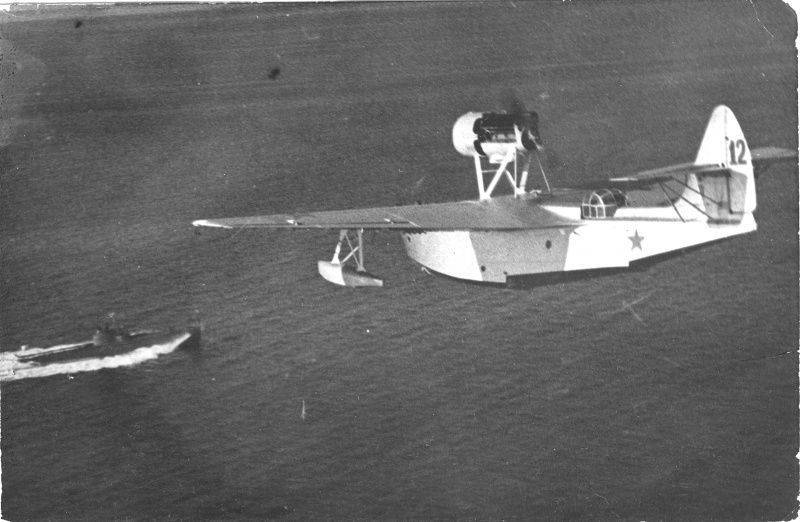
With the onset of autumn, before the frosts, the MBR-2 was installed on a wheeled chassis and exploited from unpaved runways. In winter, skied. In this form, the seaplanes flew until spring 1942.
It was possible for the MBR-2 to participate in the Battle of Stalingrad. At the end of August, an air group (commander major P. Evdokimov) 1942 flew from Baku to the Nikolo-Komarovskoye airfield, at the mouth of the Volga River (southern outskirts of Astrakhan), without landing, covering a distance of about 700 km. The main task of the group was to deter the bombing of the advancing German troops along the Elista-Astrakhan highway. For more than two months, the pilots bombed the enemy, taking off from a water aerodrome, and only deep autumn with the start of freezing on the Volga and the absence of a wheeled chassis forced the air group to return to Baku.
September 6 The 1943 of the Batumi-Poti region of the MBR-2 82-th separate aviation squadron badly damaged a German submarine. In 17 hour. 25 min. after dropping two depth charges from Lieutenant Zhandarov’s plane, a solar blot and air bubbles were observed on the detected boat on the surface of the sea. However, the boat continued to sail, and only after a second strike of the four seaplanes stopped moving.
MBR-2 began the fighting from the first days of World War II, and they also had the honor of being the first to bomb the Japanese troops at the final stage of World War II. On the night of August 9, during the Manchurian operation, the flying boats of the 115-nd separate mash three groups of four aircraft from the heights of 1400 - 2200 and bombed transports in the port of Yuki (North Korea). The first group of aircraft set fire to a tanker moored to the pier. The fire made it easier for the crews of other vehicles to perform the combat mission.
In the course of the South Sakhalin operation 11 of August, several groups of the IBR-2 of the Northern Pacific Fleet four times bombed the port of Estori and twice the airfield and the port of Toro. Five days later, close scouts destroyed the warehouses and barracks of the Japanese in the village of Toro and Taihoi one by one, clearing the bridgehead for the landing force. They carried out the MBR-2 and its main duty - intelligence, in particular, the west coast of Sakhalin Island.
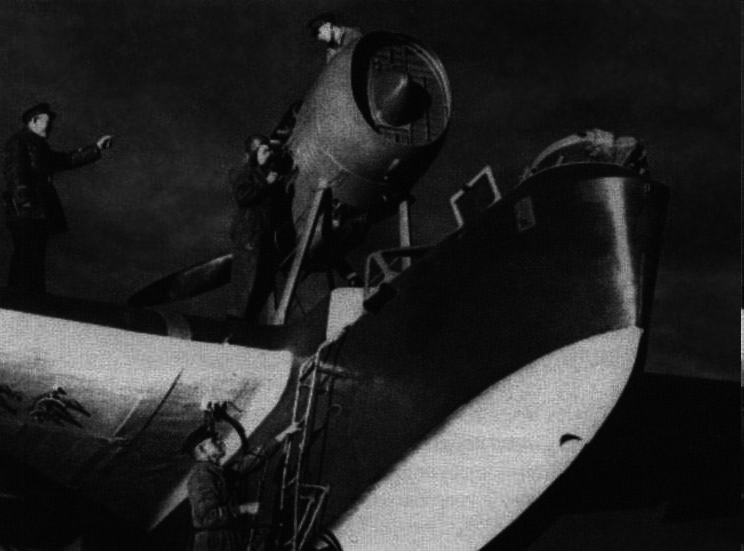
In fact, with the end of the Second World War, the combat service of heavily aged ICBR-2 aircraft was completed. A little longer they were operated in the Civil Air Fleet. Immediately after the creation of the MBR-2 with the GVF M-34 engine and the Central Design Bureau of the MS, a proposal was made to create a passenger version of the MP-1 seaplane. But GUUP initially reacted negatively to this proposal, arguing the refusal by high workload of plant No. 31.
In 1937, the first passenger MP-1bis, tested in Sevastopol, was manufactured at the Taganrog aircraft factory. From 1937 to 1941, the 59 MP-1 equipped with the M-17F and 100 MP-1 bis engines with the М-34Н engine were located in various civil aviation enterprises of the country.
In November, 1936 of the year on the Black Sea Airlines in Odessa on the MP-1 opened regular passenger flights Odessa-Batumi. The take-off weight of the ten-seater MP-1 was more than 4100 kg (empty weight - 2710 kg). Under such conditions, the seaplane climbed to a height of 1000 m in 5,5 minutes, and the maximum ceiling was 4710 m. The maximum range with passengers was 710 km.
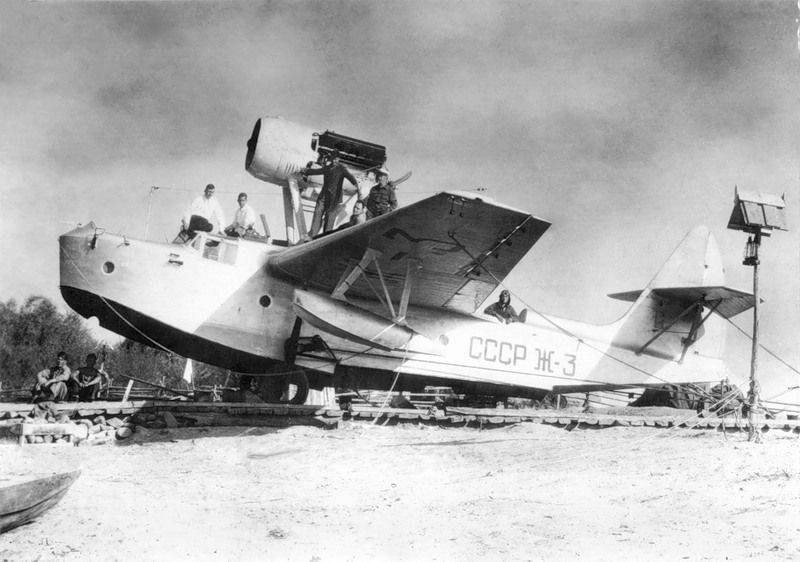
MP-1 aircraft were delivered to civil organizations not only from the Taganrog aircraft factory. Some vehicles of the first editions, with M-17F engines and dismantled weapons, were transferred from the Navy Air Force.
The pre-war years are a time of records. Aviation developed unusually fast, and many new aviation achievements were registered annually by global agencies. The Soviet MBR-2 also did not stand aside. Rather modest characteristics of the seaplane did not provide absolute achievements. However, it was possible to storm the appropriate categories of FAI. Our female crews set records most successfully.
In the 1937 year, P. Osipenko on the civil MP-1bis was able to set as many as three world aviation records. She reached a height of 7000 m with a weight of 1000 kg, then rose to 7600 m, but with a load of 500 kg. Finally, May 22's high-altitude culmination of its records was the achievement of the height 8846 m without load. Until now, this record legendary pilots remains unsurpassed.
A year later, the crew 24 of May 1938, led by Polina Osipenko (co-pilot V. Lomako, navigator of the machine M. Raskov) again struck the aviation world, having flown in a straight line on 1 km on MP-1749,23 bis. On July 2, the same crew made a non-stop flight on the Sevastopol-Kiev-Novgorod-Arkhangelsk route, 2416 km long (km 2241,5 in a straight line), with an average speed on the route in 228 km / h.
Serial production of the MBR-2 began at the plant number 31 in Taganrog with the release in 1933 of the 22-x training MBR-U with the M-17 engine, and from next year and in combat. During the serial construction, which lasted until the 1940 year, 1365 machines of all modifications were released. Despite the fact that by the beginning of World War II, the gruff and indifferent MBR-2 already looked like a complete anachronism, he passed through the whole war with honor to its last volleys. Not a single MBR-2 has survived to this day, with the exception of a reconstructed seaplane at the Museum of Aviation of the Northern Fleet.
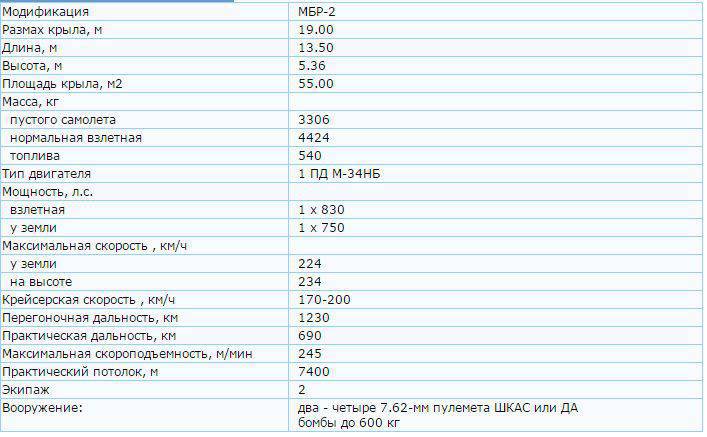
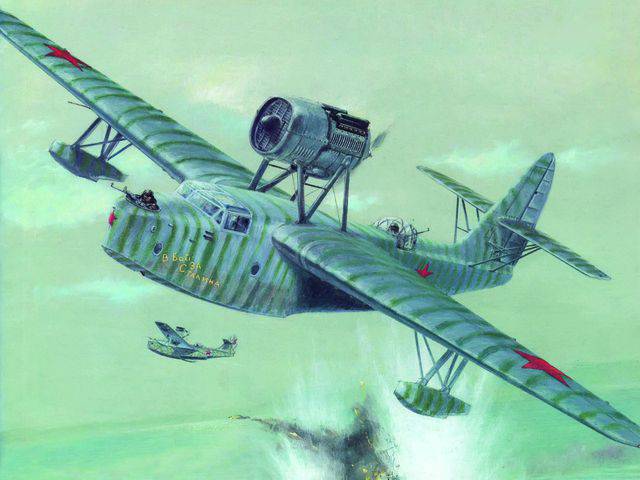
Sources:
Zablotsky A. Salnikov A. Unknown Beriev. Genius of naval aviation. M .: Yauza, Eksmo, 2009. C. 6-36.
Zablotsky A. MBR-2 in battles. Unknown Biography // Aviation and Cosmonautics. 1996. No.5. C. 25-34.
Salnikov A. Zablotsky A. Sea "ambar" // Aviation and time. 2004. No.1. C. 4-20.
Salnikov A. Zablotsky A. Marine near reconnaissance MBR-2 // Aviacollection. 2011. No.5. C. 2-8, 19-30.
Yakubovich N. Participant of three wars // Wings of the Motherland. 2001. No.11. C.11-15.
Shavrov V.B. History designs of aircraft in the USSR before the year 1938. M .: Mashinostroenie, 1994. C. 568-570.
Simakov B. Aircraft Country of the Soviets. 1917-1970. M .: DOSAAF, 1970. C. 64-66.
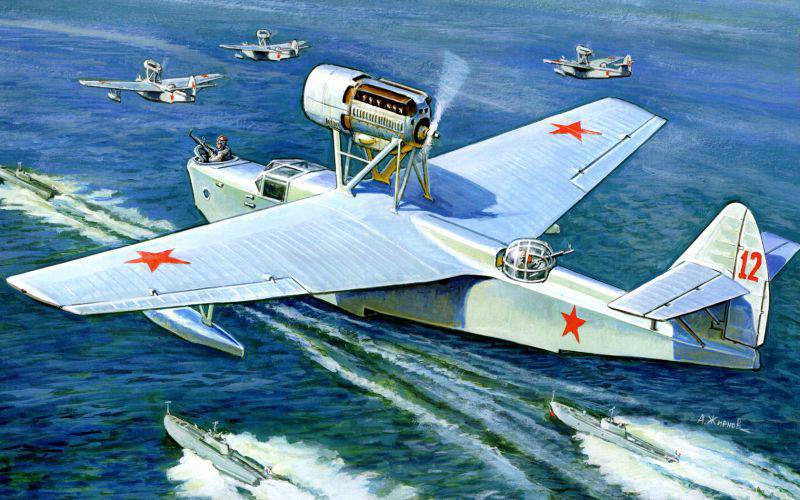
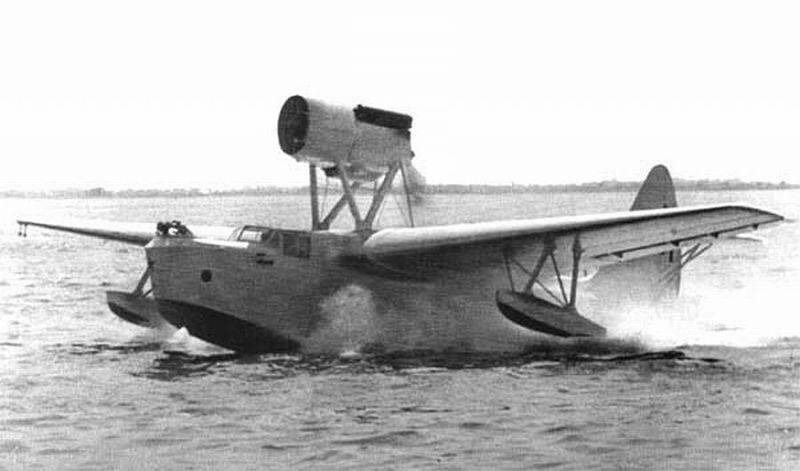
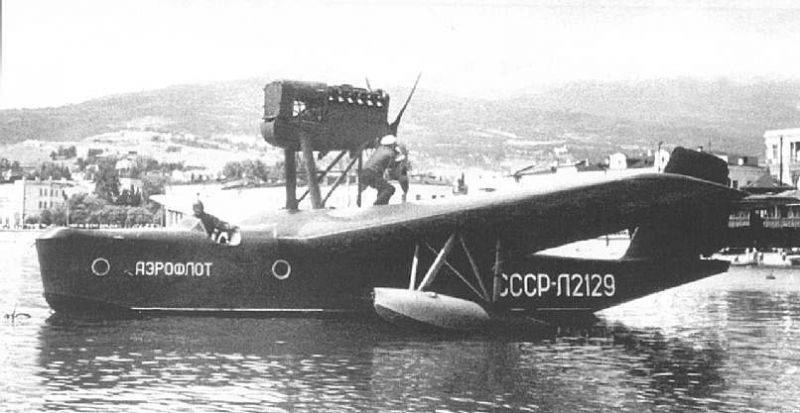
Information